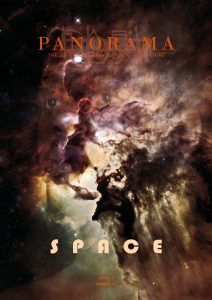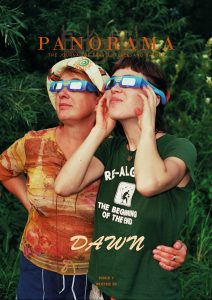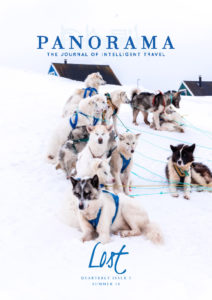I touched a Beluga whale when I was twenty years old. My fingertips slid across its salt-kissed melon forehead that is understood to change shape as the whale produces sounds. While I gasped in my heart during our encounter, the Beluga chirped the notes that had earned it the nickname “canary of the sea”. I wish I knew what that whale was saying.
Alaska is my fiftieth state. In seven years of marriage, my spouse and I have traveled coast to coast, north to south, sometimes for work but mostly for pleasure. While many states have seen us return for repeat visits, Alaska was the last holdout. It took moving from the Midwest to the Pacific Northwest to put us in a proximate distance we couldn’t ignore. As a permanent resident of the US, still a fish out of water in so many ways, I am proud of this travel accomplishment. When a city or village makes the news, I identify with the state roads and byways I’ve explored. I recall beignets and lobster rolls and peaches with memory taste buds.
They served hot chocolate on the observation deck as we coasted through Glacier National Park. The day was calm at 52° F with visibility extending ten miles. I felt small. Walls of blue and white ice surrounded us and the water carrying our ship reflected a turquoise sky. On our cruise through the bay, signs of summer disrupted the otherwise wintry landscape. Mountain sides gave way to greenery. White goats sought lunch on sharp ridges of rock. The sun swelled but we still wrapped our bodies in layers and comforted one hand with a steaming mug of chocolate. The other hand gripped a camera at all times.
Photography can sometimes make me feel like a thief. My spouse and I snap photos of memories we want to retain visually, but in every moment I am aware how each click of the camera takes a piece of a place with me. I steal the innocence of a rainbow bursting through an overhead cloud. I pocket the love between otters as they sail past us, hand in hand, on their way to meet family. Perhaps if I carry these memories in photographs, I’ll continue to feel part of a larger world.
Glacier walls are misleading. We see only a hint of what was, what is, and what is yet to come. The ice is not static. Frozen rivers collect volume each year as snow piles on in winter. Only a portion of water melts off each summer. The buildup of ice bulges out and carves grooves into mountains. Seventy-five percent of the world’s freshwater supply stems from these formations. They are alive and they keep us alive.
I marvel at glaciers because I am too insignificant to understand them. In geological terms, glaciers are meant to move at a pace of a few millimeters each year. As our world warms, some glaciers have surged as melted rivers beneath the ice pull at their structure, shifting chunks and dislodging them into the ocean. Slabs of ice float along until they gradually melt and impact sea level.
Miniature icebergs floated alongside our crawl through crisp waters. Seagulls would sometimes perch themselves on the free ride, scouting the water for snacks and picking trapped fish from ice crevices. The glacier walls appeared mostly intact, even though I heard a shipmate describe an arctic crumble the week before our arrival.
A woman wrapped in a plaid blanket edged in beside me. “It’s a little disappointing,” she said to no one in particular. “I expected to see ice falling into the water. Like in the brochures.”
I am a traveler among tourists. As an outsider, an immigrant to this country, I recognize how each of my own journeys is a temporary glimpse where I am a visitor on someone else’s home turf. When I enter someone’s home—their land, their town, their region—I aim to be a respectful guest. It is not always easy to blend in, to go unnoticed in a good way, to leave little trace of my presence. Marveling at what is new to me, foreign to my past experiences, makes noise. I may not be able to contain my wonder, but I hope to control my volume.
On a cruise ship, I find myself crossing paths with faces that become familiar. We are a miniature ecosystem with limited terrain. I took notice of the plaid blanketed woman on more than one occasion as she and her adult son remarked on their experiences compared to their expectations. We each travel for our own reasons. Some aim to escape, others to explore. I often don’t know why I visit a place until I leave it and it leaves something with me.
My journey to Alaska is less about checking the fiftieth state off my list and more about asking questions. I am at odds with the ocean: I’m drawn to water and how it makes me feel at home, but I’m intimidated by a world of creatures I will never fully understand.
“There comes a time when you just stop taking pictures,” Margaret said in between puffs on her cigarette. She’s a social grandmother visiting from Kentucky and we met earlier in the week while observing more whale breaches than we could count. “What’s another tale among tales?”
Margaret is right. I haven’t tired of seeing whales make an appearance, but I’ve become more selective when I snap photographs. With the camera at my side instead of in front of my face, I transitioned from documenting their presence to appreciating them in the moment. I lost count of the orcas and blue whales and humpbacks our crew pointed out, along with those I spotted on my own as I skimmed the surface for evidence of blow holes.
Every night, I sat on the deck outside our stateroom late into the dark hours, ever aware of a presence in the waters. Every morning after breakfast I would stroll along the upper deck and search for movement. When my timing was good, I could spot a pod of whales coming up for air or frolicking in the ship’s wake, their weightlessness in play defiant of their magnitude.
The plaid blanket woman was not impressed. “I haven’t seen any jump high in the air,” she said. “I wanted to see them do flips.” Her son nodded along, though I couldn’t tell if he was in agreement or tolerating her SeaWorld expectations. Tourism brochures feed the anticipation of seeing marine life up close and intimate, with acrobatic tricks a promoted highlight of cruising Alaskan waters.
I did, in fact, see a few whales nudge themselves into full view on this trip. My camera captured a few of these moments, while other times I opted to stop breathing for a moment to swallow their presence within mine. I cried on more than one occasion. Not the tears that come with pain or sorrow, but the quiet stream of relief that arises when words cannot convey an experience.
These were not the only tears I shed on this trip.
It was a clear day cruising along the southeast coast just past Ketchikan. The sun was high and glared off the water. A sea salt breeze kept pushing hair into my eyes, though I didn’t mind. It was the second to the last day of my journey and I savoured every remaining moment.
Margaret was sitting in her usual spot outside the rooftop bar and we chatted for a few moments before I wandered off for a wide view of the world around me. Seals had trailed our path earlier in the day on our way out of the Inside Passage and I was curious what resident critters would be revealed in the open water.
I nearly missed it. I was turning back toward Margaret when I caught something in the water. I stopped to peer overboard. Close to the ship, surfing in the wake, was a baby orca. I reached for my camera and focused my aim, walking at a brisk pace along the deck to keep snapping images. Then I pulled the camera away to take a closer look.
I choose to believe the orca was alive. In that moment, I wasn’t sure. This little creature, a baby of just a few feet, appeared to be alive, but I couldn’t help but wonder. Where was its mother? Why was it so close to the ship? Was it buoyant in the wake because it had come up to breathe, or was it floating along in the surf weightless of life?
My eyes followed the orca for as long as I could make out its shape in the water, and then I turned to the photos I snapped only moments before, looking for evidence that could offer proof of life. In my uncertainty: tears. I was simultaneously marveling over witnessing such a tiny creature in the wild and the lack of clarity regarding its wellbeing.
I chose to believe the baby whale was okay, but it didn’t stop me from wondering.
A female orca may give birth to a single calf every three to five years, though it’s not uncommon to have a decade between births. The average gestation period for orcas is seventeen months. The baby killer whale I saw would have spent a year and a half growing inside its mother, but I am skeptical of its gestation because the calf didn’t appear more than five feet long. Orcas tend to be born around seven feet long, with a weight of three to four hundred pounds. After birth, mother whales will protect their young until the child is able to hunt and defend itself. I did not see evidence of a mother whale above or below the surface. Science tells me the baby was probably not alive and, perhaps, had been born premature.
Orca mortality is high during those first few months of life. Orcas have no natural predators, so an adult whale can live for decades. Surviving the first few months with its mother as trainer is the biggest hurdle for baby, a leap of faith for mother.
I do not know what a mother whale feels. Studies have expressed how whales are intelligent and social, form emotional bonds, and feel grief when one of their community members dies. Spindle cells—responsible for processing emotions and social connections—were once thought to only appear in humans and apes. More than a decade ago, these same spindle cells were discovered in a number of whale breeds.
Science tells me whales feel love and grief as we do. I do not have a mind for science, but I understand loss. I know grief. And when I found myself drawn to scientific proof of whales in mourning, I saw evidence in photographs: whales in the wild carrying dead calves, circling dead family members and swimming alongside corpses with occasional nudges to revive what cannot be revived. Whales display their grief through emotional distress, behavioral changes, and the occasional disregard for their own well-being. A whale carrying a deceased calf is less able to protect itself from intruders. A whale focused on a family member’s death is not focused on hunting tonight’s dinner. Whales mourn, and I mourn for the baby I want to believe was alive.
Margaret’s laugh is unmistakable. She has a throaty chuckle heard from anywhere on the deck. I waved as I passed her, now surrounded at the bar by other Kentuckians she is traveling with. Her daughter’s laugh is similar to her own. Together they squeak and squeal in companionship, enjoying each other’s company on this “trip of a lifetime” she planned for her kin.
I turned to silence. From my stateroom’s deck, I sit and watch the water for signs of life. I touched a Beluga whale when I was twenty years old. On my voyage through Alaskan waters, a baby giant touched me.











